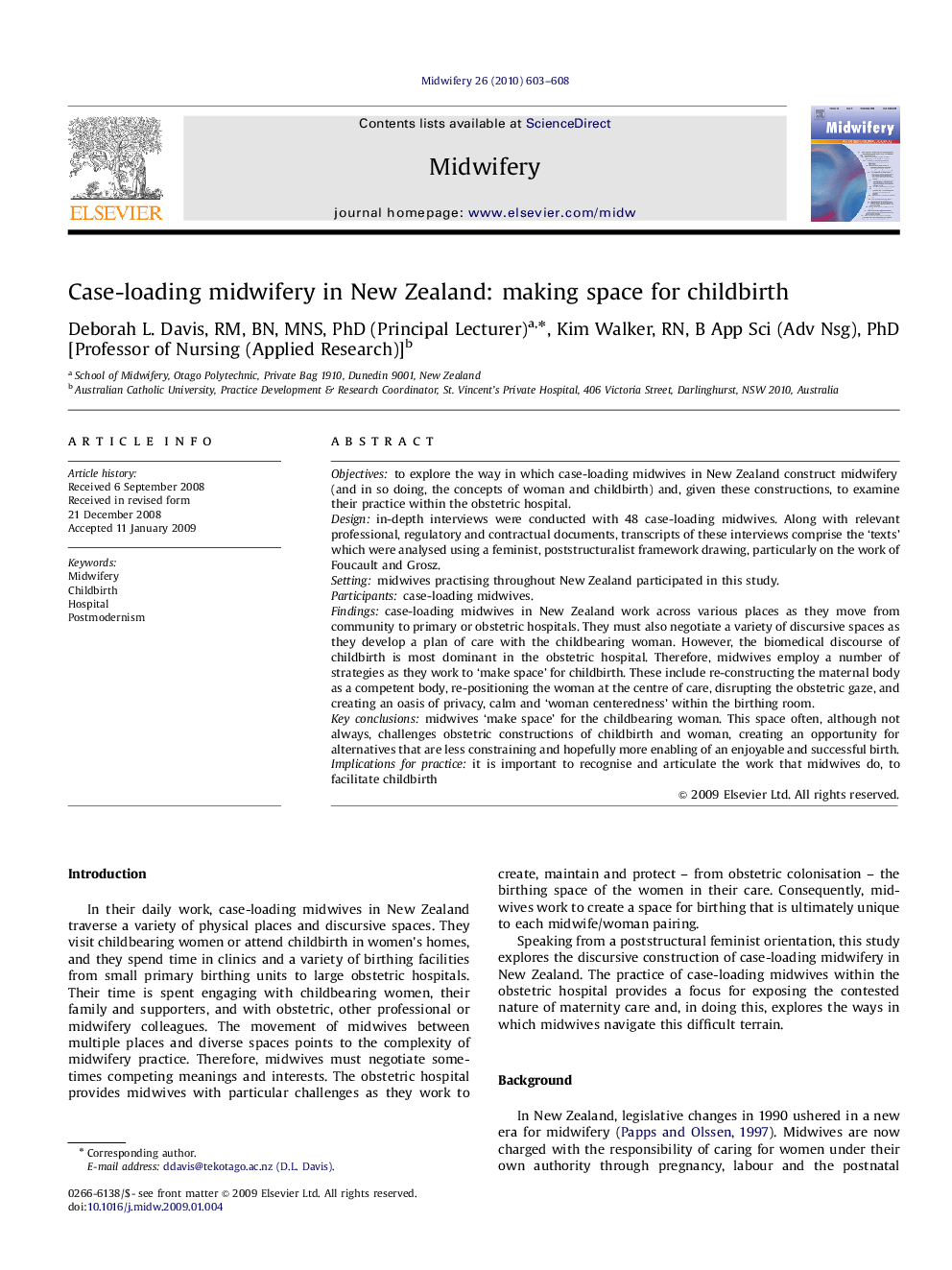| Article ID | Journal | Published Year | Pages | File Type |
|---|---|---|---|---|
| 1085163 | Midwifery | 2010 | 6 Pages |
Objectivesto explore the way in which case-loading midwives in New Zealand construct midwifery (and in so doing, the concepts of woman and childbirth) and, given these constructions, to examine their practice within the obstetric hospital.Designin-depth interviews were conducted with 48 case-loading midwives. Along with relevant professional, regulatory and contractual documents, transcripts of these interviews comprise the ‘texts’ which were analysed using a feminist, poststructuralist framework drawing, particularly on the work of Foucault and Grosz.Settingmidwives practising throughout New Zealand participated in this study.Participantscase-loading midwives.Findingscase-loading midwives in New Zealand work across various places as they move from community to primary or obstetric hospitals. They must also negotiate a variety of discursive spaces as they develop a plan of care with the childbearing woman. However, the biomedical discourse of childbirth is most dominant in the obstetric hospital. Therefore, midwives employ a number of strategies as they work to ‘make space’ for childbirth. These include re-constructing the maternal body as a competent body, re-positioning the woman at the centre of care, disrupting the obstetric gaze, and creating an oasis of privacy, calm and ‘woman centeredness’ within the birthing room.Key conclusionsmidwives ‘make space’ for the childbearing woman. This space often, although not always, challenges obstetric constructions of childbirth and woman, creating an opportunity for alternatives that are less constraining and hopefully more enabling of an enjoyable and successful birth.Implications for practiceit is important to recognise and articulate the work that midwives do, to facilitate childbirth
